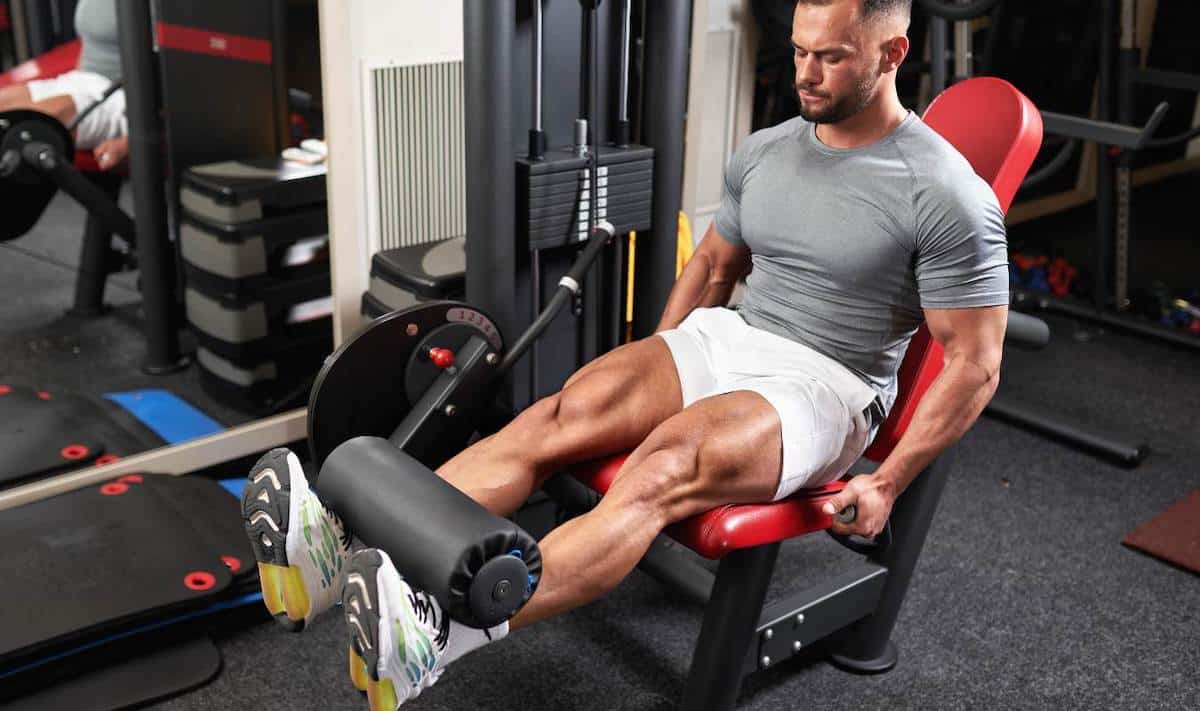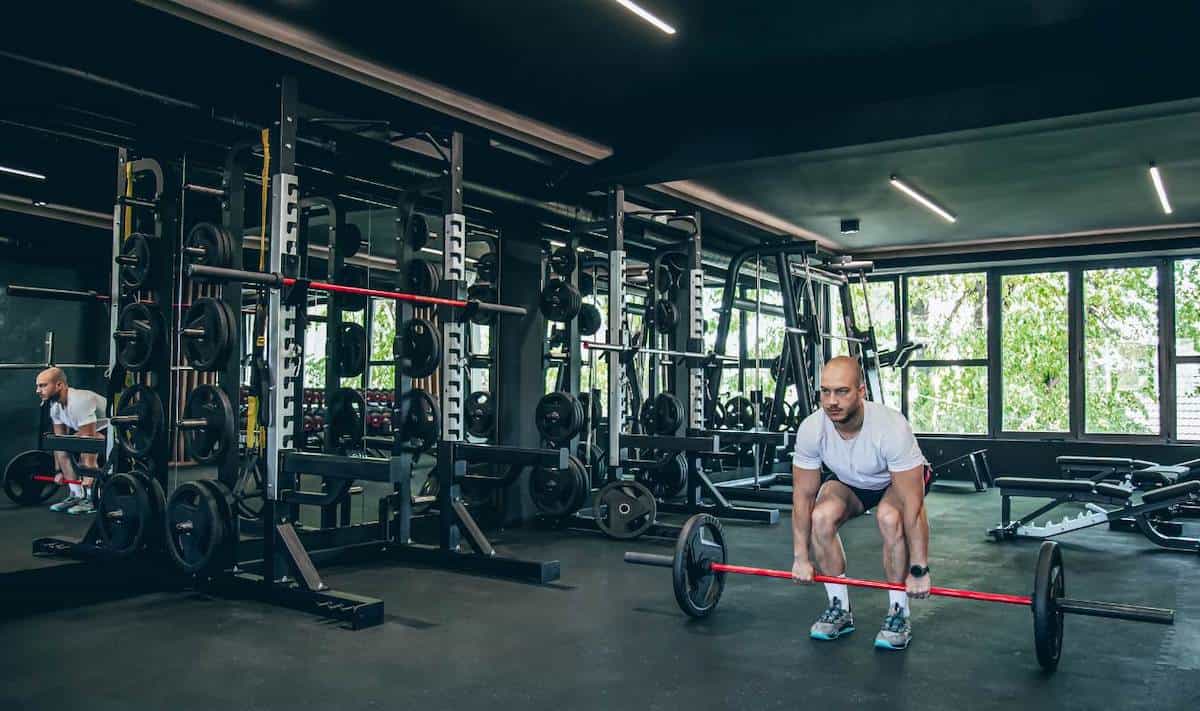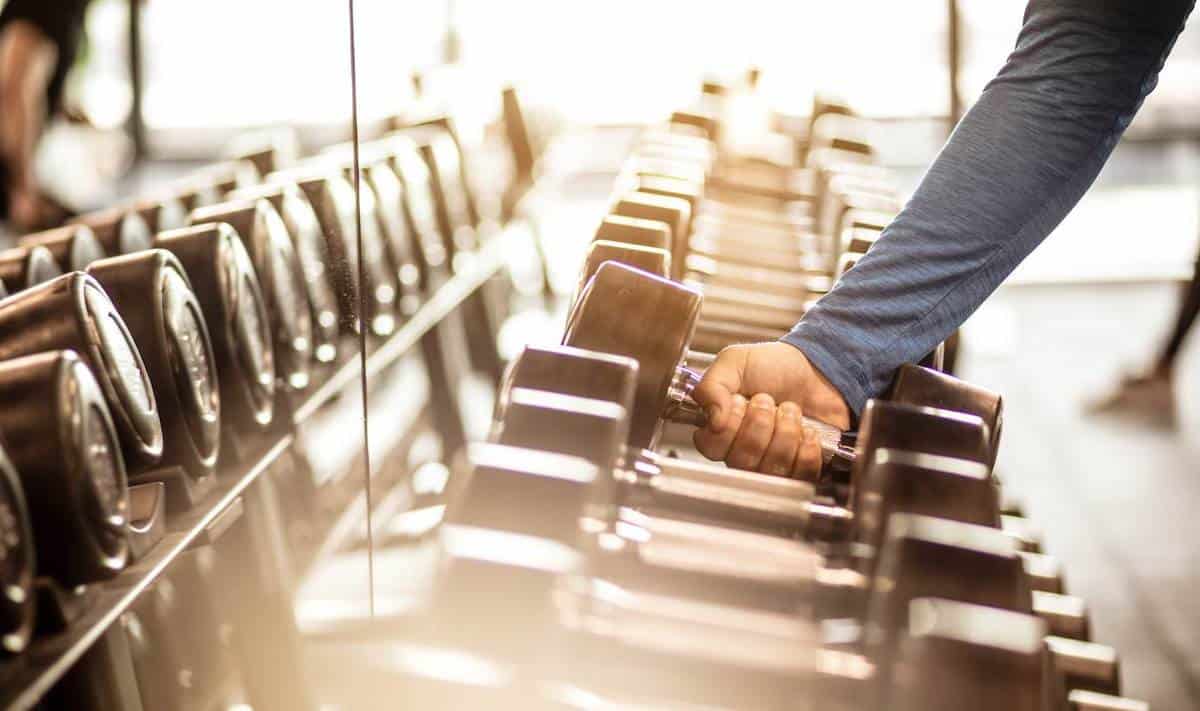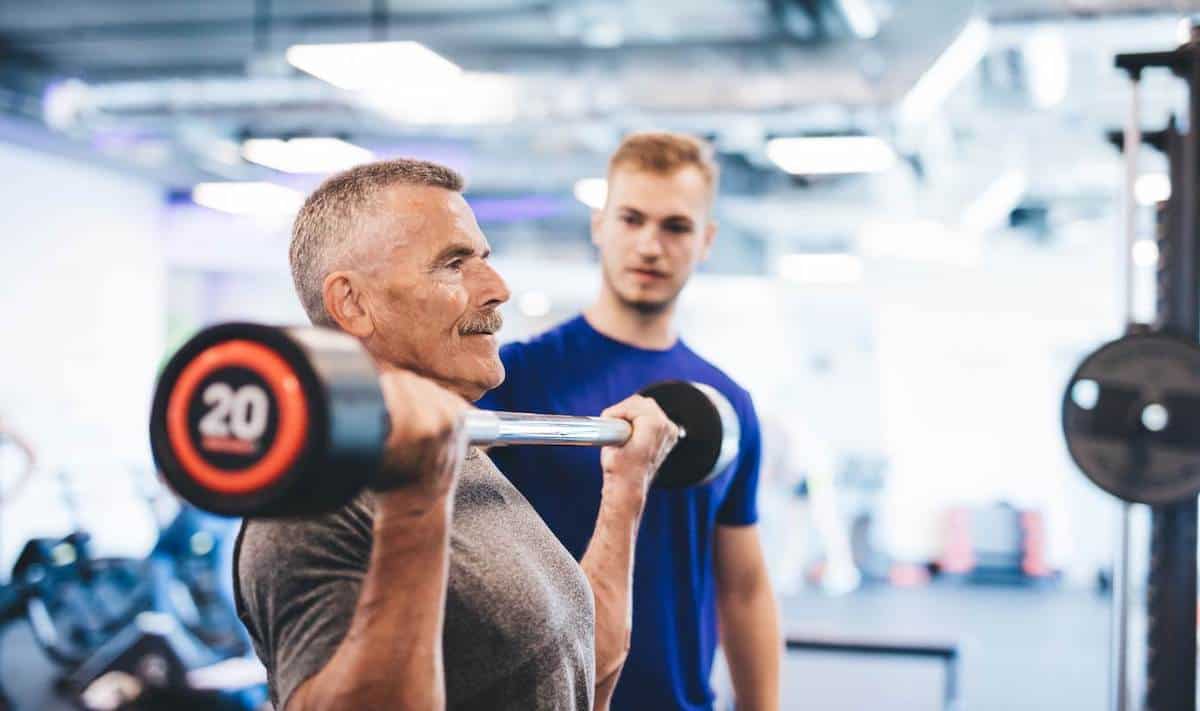
The best online fitness resource you'll ever need. We filter out the BS to ensure you meet your health and fitness goals!

The best online fitness resource you'll ever need. We filter out the BS to ensure you meet your health and fitness goals!

Welcome to the dynamic world of fitness where breaking the mold leads to extraordinary results! You’re about to embark on a journey that redefines the conventional Push Pull Legs (PPL) workout routine.
Forget the standard three-day cycle; we’re taking things up a notch.
In this guide, I’m excited to unveil how the versatile PPL format can be ingeniously adapted to a 5-day-a-week workout plan. This innovative approach is designed not just to challenge your muscles but to fit seamlessly into your weekly schedule, offering more flexibility and variety.
Whether you’re looking to build strength, enhance muscle definition, or simply shake up your fitness routine, you’re in the right place. Let’s dive into this transformative workout plan and unlock your full potential!
Jump to the workout plan now!
Alternatively, you can download the free PDF version of the program using the link below:
| Program style | Resistance training + bodybuilding |
| Program structure | Push Pull Legs |
| Workout duration | 1-2 hours |
| Scheduling | 5 days a week |
| Goal | Body transformation |
| Level | Beginners to advanced |
| Target Gender | Male and Female |
Expect to be working hard and flirting with over-training. I always flinch when writing a program that specs more than 4 days a week in the gym.
If you’re working out with the proper intensity, 3 days is enough and 4 is plenty; 5 days is pushing it (pun unintended).
So, you’ll have to get at least 8 hours of sleep a night, eat enough healthy food to maintain your energy and support muscle growth, and you’ve got to observe the rest days. Stay out of the gym on rest days…period.
The routine provides lots of variety, with a sampling of the best exercises known for individual body parts.
Compound and isolation exercises are included.

You will need a full gym to do this 5 Day PPL routine.
Most of the exercises provide for equipment options; but you’ll need machines and dumbbells to get the most out of it. Equipment like Smith machines, selectable weight machines, cables, barbells, and dumbbells will give you more tools to use.
Inevitably, there are people who just don’t do well with one particular type of equipment. Dumbbells are the exception there. Used properly, anyone can use them.
Some selectable machines don’t fit certain physiques. For instance, I have yet to find a chest press machine with a seat and lever arms that adjust to my long arm length. But dumbbells and Smith machines seem to work fine.
At the very least, you’ll need dumbbells, and a sturdy commercial grade adjustable bench, and a dual-arm adjustable cable machine.
Check out one of our at-home routines if you don’t have access to a fully-stocked gym:
The workout structure is 3 days on, 1 day off, 2 days on, 1 day off. Rest days should be observed as-written to allow for muscle recovery. You’ll be doing some work if you follow the routine correctly and those rest days will be important.
There’s a dedicated Push, Pull, and Leg day, followed by a hybrid Push-Pull day that focuses on the shoulder joint front and back, and then a second leg day that drills down on the glutes a bit more.
This program will interest both women and men.
A little cardio is included. We’ve got it slotted on the second leg day, but that’s flexible. I think it fits best there, just due to the workload.
Cardio is Low Intensity Steady State (LISS), which is now the cardio of choice for many of the critically-thinking trainers. LISS has been demonstrated as the best cardio for leanness.
This is the format:
| Day | Split | Muscles |
|---|---|---|
| 1 | Push 1 | Chest, Anterior shoulders, Triceps |
| 2 | Pull 1 | Back and Biceps |
| 3 | Legs 1 | Quads, Hams, Lower legs, Glutes |
| 4 | REST | |
| 4 | Hybrid Push-Pull | Chest, Anterior shoulders, Triceps, Back, and Biceps |
| 5 | Legs 2 + Cardio | Quads, Hams, Lower legs, Glutes |
| 6 | REST |
| Exercise | Set 1 | Set 2 | Set 3 | Set 4 |
|---|---|---|---|---|
| Chest Press | 15-20 | 10-12 | 8-10 | 8-10 |
| High Incline Chest Press | 15-20 | 10-12 | 8-10 | 8-10 |
| Decline Chest Press | 15-20 | 10-12 | 8-10 | 8-10 |
| Front Raises (Supported, face forward on high incline bench) | 15-20 | 10-12 | 8-10 | 8-10 |
| Triceps Extensions | 15-20 | 10-12 | 8-10 | 8-10 |
| Exercise | Set 1 | Set 2 | Set 3 | Set 4 |
|---|---|---|---|---|
| Hammer Curls or Palms-up Curls | 15-20 | 10-12 | 8-10 | 8-10 |
| Pulldowns (or Pullups) | 15-20 | 10-12 | 8-10 | 8-10 |
| Low Row | 15-20 | 10-12 | 8-10 | 8-10 |
| Rear Deltoid Flyes | 15-20 | 10-12 | 10-12 | 10-12 |
| Chest Supported Dumbbell Rows | 15-20 | 10-12 | 8-10 | 8-10 |
| Exercise | Set 1 | Set 2 | Set 3 | Set 4 |
|---|---|---|---|---|
| Hack or Pendulum Squats | 15-20 | 10-12 | 8-10 | 8-10 |
| Leg Extensions | 15-20 | 10-12 | 8-10 | 8-10 |
| Hip Adductions | 15-20 | 10-12 | 8-10 | 8-10 |
| Romanian Deadlifts (RDLs) or Single-Leg B-Stance RDLs | 15-20 | 10-12 | 8-10 | 8-10 |
| Leg Curls (Seated (preferred) or Prone) | 15-20 | 10-15 | 8-10 | 8-10 |
| Calf Raises | 15-20 | 15-20 | 15-20 | 15-20 |
| Exercise | Set 1 | Set 2 | Set 3 | Set 4 |
|---|---|---|---|---|
| DB Pullovers | 15-20 | 10-12 | 8-10 | 8-10 |
| Low to High Flyes, Palms Up | 15-20 | 10-12 | 8-10 | 8-10 |
| Lateral Raises | 15-20 | 10-12 | 8-10 | 8-10 |
| Triceps Extensions | 15-20 | 12-15 | 12-15 | 10-12 |
| Biceps Curls | 15-20 | 10-12 | 8-10 | 8-10 |
| Dumbbell Rows (Supported, face forward on incline bench) | 10-12 | 10-12 | 8-10 | 8-10 |
| Dumbbell “I” or “Y” Raises (Supported, face forward on high incline bench) | 15-20 | 10-12 | 10-12 | 10-12 |
| Face Pulls | 15-20 | 10-12 | 10-12 | 10-12 |
| Exercise | Set 1 | Set 2 | Set 3 | Set 4 |
|---|---|---|---|---|
| Bulgarian (RFE) Split Squats | 15-20 | 10-12 | 8-10 | 8-10 |
| Tibialis Anterior Raises | 20 | 20 | 20 | |
| Leg Extensions | 15-20 | 10-12 | 8-10 | 8-10 |
| 45 Degree Hyperextensions or Cable Hip Extensions | 15-20 | 10-12 | 8-10 | 8-10 |
| Leg Curls (Seated (preferred) or Prone) | 15-20 | 10-15 | 10-12 | 8-10 |
| Hip Abductions | 15-20 | 15-20 | 15-20 | 15-20 |
| Calf Raises | 15-20 | 15-20 | 15-20 | 15-20 |
| LISS** (Treadmill or Exercise Bike) | 45 min LISS (RPE 4-5) |
Application is half of a routine. Exercises alone mean little if not put in the context of the entire workout and lifestyle.
Some things just work all the time. Observe all the resistance training basic rules of thumb for the ectomorph program as for any other resistance training routine.
These include progressive overload, judicious attention to Reps In Reserve (RIR), rep cadence, rest and recovery.

As you get stronger and adapt to an exercise, your ability to do more reps and more weight will improve.
Muscles won’t grow, get denser, or become stronger without a challenge.
So…
As things get easier for your muscles, you have to make it harder on them.
You do this by adding reps, or adding weight. In the case of this routine–which has specified rep ranges–you’ll add weight.
Once you’re able to lift a weight for the specified number of reps with a given resistance, it’s time to use heavier weight until all you can do is the lower end of that rep range.
For a rep range of 8 to 10, once you’re able to do a 10th, or even 11th, rep, increase the weight on the next set (or next workout) so that the 8th rep is all you can do.
Progressive Overload is 100% proven. No one argues its effectiveness at building strength and muscle quality.

The last couple of reps of all your last two working sets (meaning not warm-ups) should be all the way to mechanical failure.
You can use the rule of thumb of 1 second for lifting and 2 seconds for letting the weight down (aka 1 second concentric, 2 seconds for eccentric). Eccentric for the win.
Don’t let the weight move you; control it. You be the one to move the weight, and not the other way ‘round.
No bouncing, swinging, kipping, launching, boosting…none of that stuff.
As I’ve already mentioned, working out 5 days a week is a lot, unless you’re training like a wimp.
Observe the rest days slotted between Leg Day and Hybrid Push-Pull Day, and again after Leg Day #2 before you start over next week.
If you find you’re constantly sore, or tired, back off from mechanical failure on all but your last set of each exercise, and take sets 1 through 3 to 1 or 2 Reps in Reserve.
Once you adapt, you can kick up the intensity again.
You will not make gains if your muscles aren’t allowed to recover.
Please ignore extreme workout mantras like “all it takes is all you’ve got” and “pain is just weakness leaving your body”. These sayings make for interesting T shirts but they stand in the way of long-term muscle gains.
Rest a minute or 2 between warm-up sets but more for your harder sets and 3 minutes between sets 2, 3, and 4. The latest clinical evidence points to 3 minutes being best if you’re lifting the right way.
While you’re resting, be thinking about your next set. How can you do that next set with better form? With more intensity? Did anything feel particularly right or wrong with the set you just finished?
You’ll be able to make more and better gains with an ability to self-analyze. Practice critiquing your own workouts.
Do no more than a couple of cardio sessions a week. Opt for the Low Intensity Steady State.
Note that this program is for people with robust cardiovascular systems who are not dealing with existing or onset CV disease.
Individuals over age 50 should leave a rep or two in the tank on every set, unless they’re a person who’s trained at a high level for years. Those folks can go ahead and push it, because those people will also have the experience to know when too much is too much.
If you train like a 20-year-old when you’re 50, and don’t have a very solid muscle base built up, you’re going to be writing a check your body can’t cash.
Again, ignore extreme workout rhetoric. Train wisely.
Download our 5 Day Push Pull Legs Workout Routine PDF below:
We offer customized programs. If you like what you see here in the downloadable program and would like it customized for your specific gym equipment or body type, we can do that. Comment or Drop us a line!.